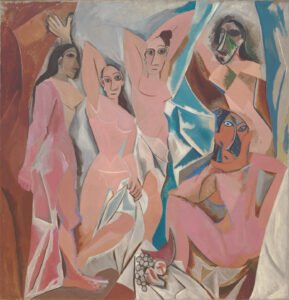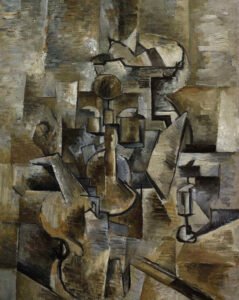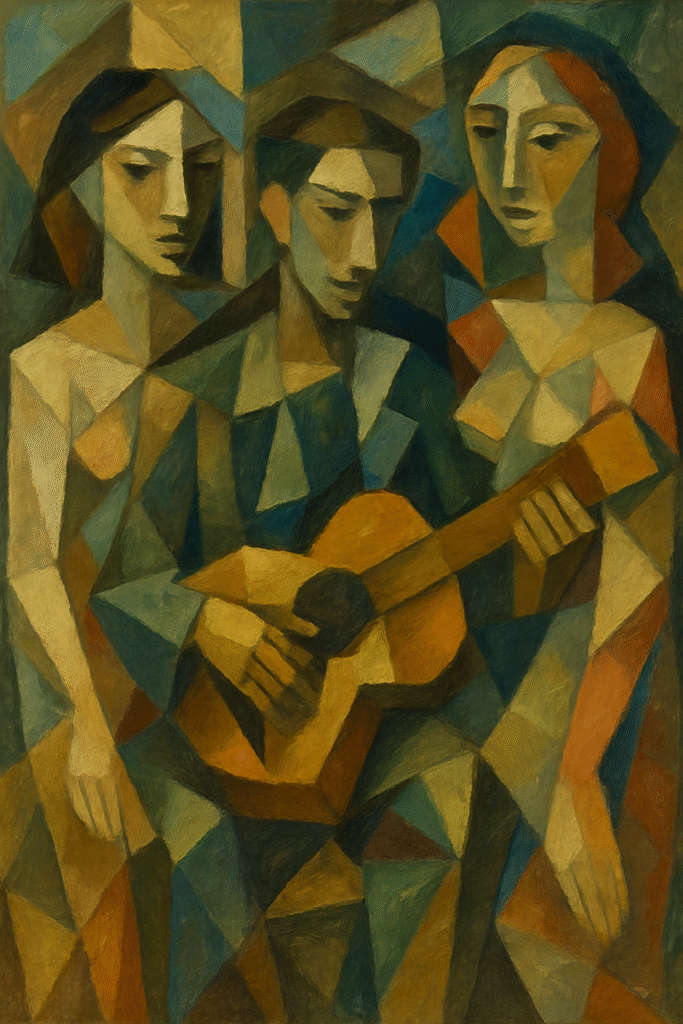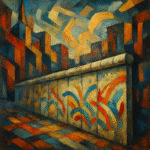In the vibrant world of modern art, Cubism reigns as one of the most influential movements, characterized by its revolutionary approach to representing reality. What is Cubism? It is an art movement that emerged in the early 20th century, challenging traditional forms by depicting subjects from multiple viewpoints to create a fragmented, abstracted appearance.
What is Cubism? A Beginner’s Guide
Cubism is a groundbreaking art movement that began in the early 1900s, pioneered by artists Pablo Picasso and Georges Braque. It represents objects from multiple perspectives, creating a fragmented, dynamic visual experience. This technique breaks away from the conventional single viewpoint, encouraging viewers to engage more deeply with the artwork.
Key Characteristics of Cubism
Cubism is defined by:
* Fragmentation: Objects are divided into geometric shapes.
* Multiple Perspectives: Scenes are shown from various angles simultaneously.
* Limited Color Palette: Early Cubist works often utilize muted tones, emphasizing form over color.
These features together revolutionized art, establishing Cubism as a vital part of contemporary art movements. For an in-depth understanding of these elements, refer to the Museum of Modern Art’s resources on Cubism (MoMA, 2023).
The Evolution of Cubism: Analytic vs. Synthetic
Analytic Cubism (1907-1912)
Analytic Cubism focuses on breaking down objects into basic geometric shapes, presenting multiple viewpoints. It often uses a monochromatic color scheme. Artists such as Picasso and Braque are central to this phase.
Synthetic Cubism (1912 onwards)
Synthetic Cubism reintroduces color and texture, incorporating mixed media like newspaper and patterned paper. It simplifies forms and shifts focus to constructing rather than deconstructing objects. This phase is marked by works from artists like Juan Gris.
| Characteristic | Analytic Cubism | Synthetic Cubism |
|---|---|---|
| Objective | Deconstruct objects into geometric forms | Construct objects using simplified shapes |
| Color Palette | Monochromatic or muted tones | Bold and varied colors |
| Materials | Traditional paints | Mixed media, including collage elements |
Exploring Three Masterpieces of Cubism
1. ‘Les Demoiselles d’Avignon’ by Pablo Picasso
Picasso’s 1907 painting, ‘Les Demoiselles d’Avignon’, is a seminal Cubist work that challenges perceptions of beauty and representation. Its distorted figures and angular shapes utilize African mask aesthetics, marking a radical departure from traditional art norms.
Why It Matters
* Dramatic Angles: The women appear in fragmented forms.
* Reinterpretation of Femininity: Picasso presents a bold critique on sexuality and identity.

Cubist painting by Picasso featuring female figures in fragmented form inspired by African art.
2. ‘Violin and Candlestick’ by Georges Braque
Georges Braque’s 1910 piece, ‘Violin and Candlestick’, epitomizes Cubism’s exploration of everyday objects through fragmented forms. The subdued hues and geometric complexity offer a visual harmony reflective of musical themes.
Essential Cubist Elements
* Subtle Palette: Shades of brown and gray enhance the contemplative atmosphere.
* Geometric Complexity: Realities are reimagined through intertwined shapes.

Cubist painting by Braque depicting everyday objects with fragmented geometry.
3. ‘Man with a Guitar’ by Juan Gris
‘Juan Gris’ 1912 painting ‘Man with a Guitar,’ is a cornerstone Synthetic Cubist work, highlighting clarity over chaos. Gris utilizes vibrant colors and bold outlines to maintain structure within Cubism’s complex forms.
Takeaways
* Structure: Emphasizes precise shapes while adhering to Cubist principles.
* Colorfulness: The use of brighter colors reflects Cubism’s evolution.

Cubist painting by Juan Gris showing a man with a guitar using vibrant colors and clear outlines.
How to Study Cubism: Resources for Art Enthusiasts
Accessing Cubism art education is more accessible than ever through digital platforms:
1. Online Courses: Platforms like Coursera offer classes on modern art and Cubism.
2. Virtual Art Galleries: Explore digital collections at Google Arts & Culture.
3. Interactive Webinars: Participate in discussions and gain insights from art experts.
Actionable Steps for Learning Cubism
* Signup for online art classes focusing on modern art movements.
* Visit virtual galleries for a comprehensive look at Cubist works.
* Engage in community forums and built connections with fellow art enthusiasts.
Why Cubism Continues to Matter
Cubism does more than redefine artistic technique; it reshapes our understanding of perspective. Its impact is seen in contemporary art movements and continues to inspire new generations. Embracing Cubism enables aspiring artists to rethink concepts of space and form, leading to endless creative possibilities.
Embrace Your Inner Artist
Begin your journey into Cubism with accessible resources like interactive galleries and courses. Whether you’re an art novice or an experienced creator, exploring Cubism’s multifaceted nature encourages a fresh artistic perspective. Create, understand, and showcase your creativity—an odyssey offering rich rewards in artistic practice.
Conclusion: The Lasting Impact of Cubism
Cubism is a journey into understanding form, space, and perspective. Its legacy lives on through millions of artworks that have drawn inspiration from its revolutionary principles. Whether through formal study or creative practice, exploring Cubism offers profound insights and personal growth. Dive deeper, create widely, and transform your view of art.
References
* MoMA. (2023). “Cubism Overview.” Museum of Modern Art
* Art Institute of Chicago. (2021). “Cubism and Its Legacy.” Art Institute of Chicago


